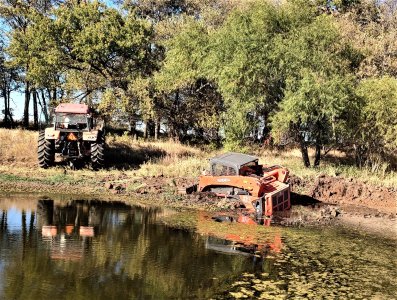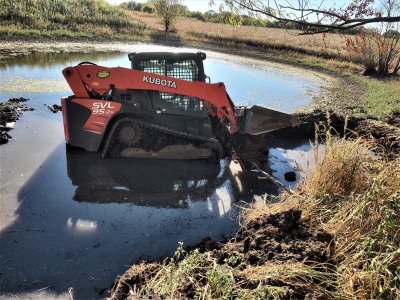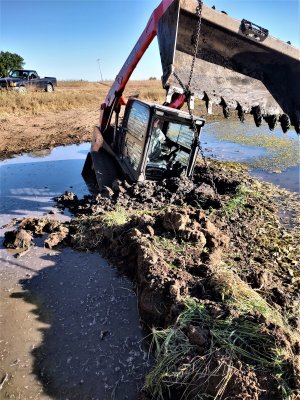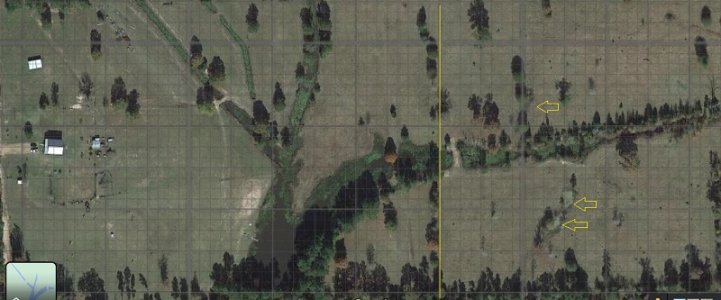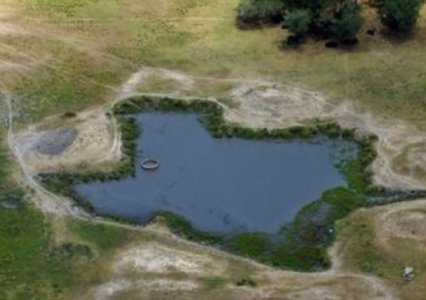The
The term tank, for a small body of water here in Texas goes back 100s if not thousands of years. Hueco Tanks out near El Paso is an example. Hueco is Spanish for 'hollow'. Hueco Tanks predates even Spanish and Indian occupation of the desert Southwest.
Generally, (in Texas) a tank is hollowed out in mostly level terrain, with the water coming from whatever rain falls directly into it or from the immediate area on the same property..and maybe some from a closely adjoining area.
But if an impoundment is made by digging out a dry stream bed and throwing a dam across it, it's a pond. The picture I posted above would be a pond because it get's water from runoff emanating from several hundred acres in the National Forest. It comes in thru the culvert or pipe you can see in the background. Most of the time there is no water coming in.
In Northeast Texas, it's common to call any impoundment constructed downstream from a running spring a pool, just as most of us call a deep part of a small constantly running stream or small river, a pool. My grandfather built his pool on Moss Springs, a small artesian spring that was on his property, about 45 miles East of Texarkana.
(That spring also provided water to his house up the hill. My father, my uncles, I and my older sisters carried lots of buckets of water up to the house from that spring until my uncles dug down into the spring and sunk a couple of big cement culverts stacked vertically as a settling vessel and dropped an electric powered pump suction off into it and piped the house for running water. Prior to that, a bucket sat on the kitchen counter, with a dish towel over it to keep flies out and a long handled aluminum dipper in the bucket. Best tasting water I ever drank. Yes, we all drank right out of the same dipper. That went away after the pump was installed but everyone had a bit of a shock when one of the uncles came back from the spring one day to report that a week old calf had wandered in and fell off in the culvert and drowned. Probably been in there a couple of days but the spring water was so cold year round, no putrefaction had occurred yet.)
